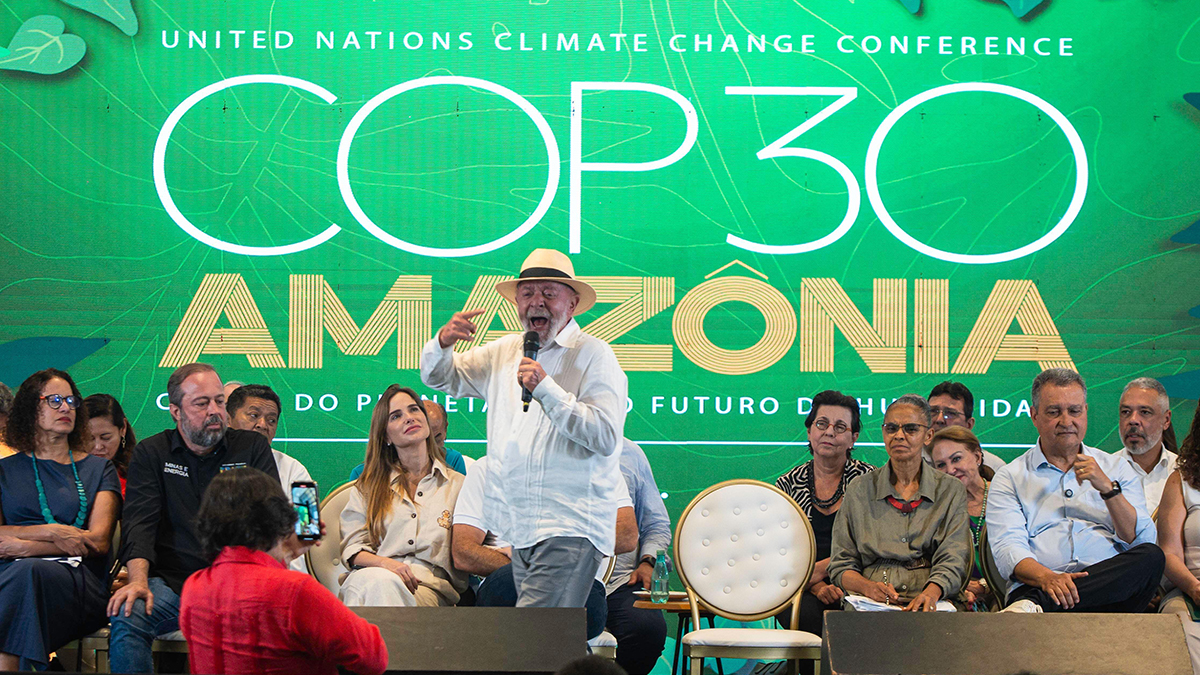Climate finance means sharing all the world – by insuring it
Ambition-setting will not cut it anymore – climate solutions need to be deployed at speed and scale
Re/insurers could make COP30 the most consequential of the UN’s climate talks to date by enabling the finance sector to take a holistic approach to climate change
Imagine there’s no insurance. It’s easy if you try, especially if global warming continues its current trajectory.
Günther Thallinger, chairman of both the sustainability and investment boards at Allianz SE, put it best in a recent post on LinkedIn: “There is no capitalism without functioning financial services. And there are no financial services without the ability to price and manage climate risk.”
There is only one path forward, Thallinger stresses, and that is to prevent any further increase in atmospheric energy levels, by burning less carbon or by capturing it at the point of combustion. “These are the only two levers. Everything else is delay or distraction,” he writes.
Solar, wind, battery storage, green hydrogen, electrification, grid modernisation, demand-side efficiency are not sketches on a drawing board, but mature solutions. All that is needed from their deployment is speed and scale.
For that, the world needs climate finance. Not as a sideshow to the economy, and not as a marching band that insurers can choose to join or leave. Otherwise, there really will be hell below us, and above and all around us too.
Waiting for a definition
COP29 may have concluded with a new collective quantified goal on climate finance but, in the wider world of investment, the meaning of “climate finance” is open to interpretation.
On the one hand, there is public climate finance, which is the subject of the UN’s climate talks. On the other, there is private investment in climate-related projects. In that dual context, re/insurers need to be clear about what they can and cannot do to help draw capital into the transition to net zero. The bold assertion that insurance is the linchpin for private capital to flow is not the same as explaining exactly what re/insurers are offering.
The potential and actual roles of insurance in financing climate mitigation, adaptation and resilience is not a new debate at the UN level. Insurers were first present at a COP at least as long ago as COP3 in 1997, which famously concluded with the Kyoto Protocol. Insurers, research institutes and non-governmental organisations went on to form the Munich Climate Insurance Initiative (MCII) in 2005, in response to the growing realisation that insurance solutions can play a role in adaptation to climate change, as suggested in the Kyoto Protocol and the United Nations Framework Convention on Climate Change.
The MCII and many other initiatives that followed, such as the Insurance Development Forum that launched in 2016, are still going strong. However, the same cannot be said in all cases and, since the early days of UN climate talks, it has been proven time and again it is not enough to unveil an initiative at a COP, if it then takes months or even years to work out that it cannot deliver everything that was promised. It would be much more effective if the designers of an initiative said from the outset: “We can do X, but we can't do Y.” Then, they could work with other actors to find the missing pieces. If there is something everyone can agree on, it is that there is no time to waste. Searching for a true definition of “climate finance” wastes time.
In the lead-up to COP30, investors and insurers will be watching closely the next generation of commitments that countries release – their Nationally Determined Contributions. Ambition-setting will not cut it anymore. There needs to be clear policy priorities embedded in legislation. Only then, can the required investment and insurance be deployed. That does not mean these cannot be planned now.
You may say I’m a dreamer, but it would be better to drop the word “climate” from climate finance and start making all finance decisions in the real world of climate change. Before it becomes the only choice there is.



